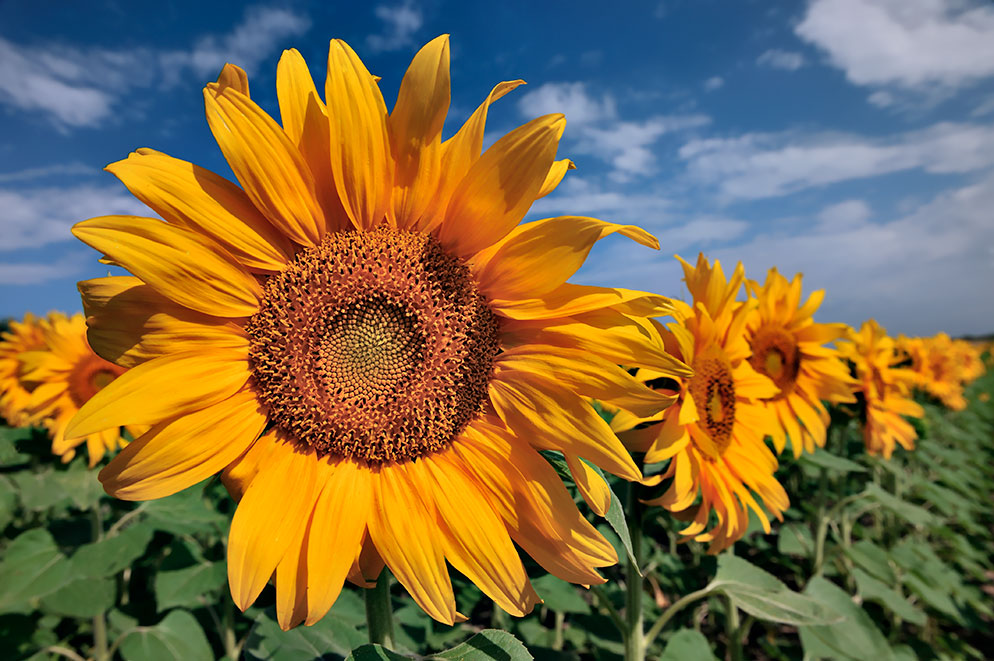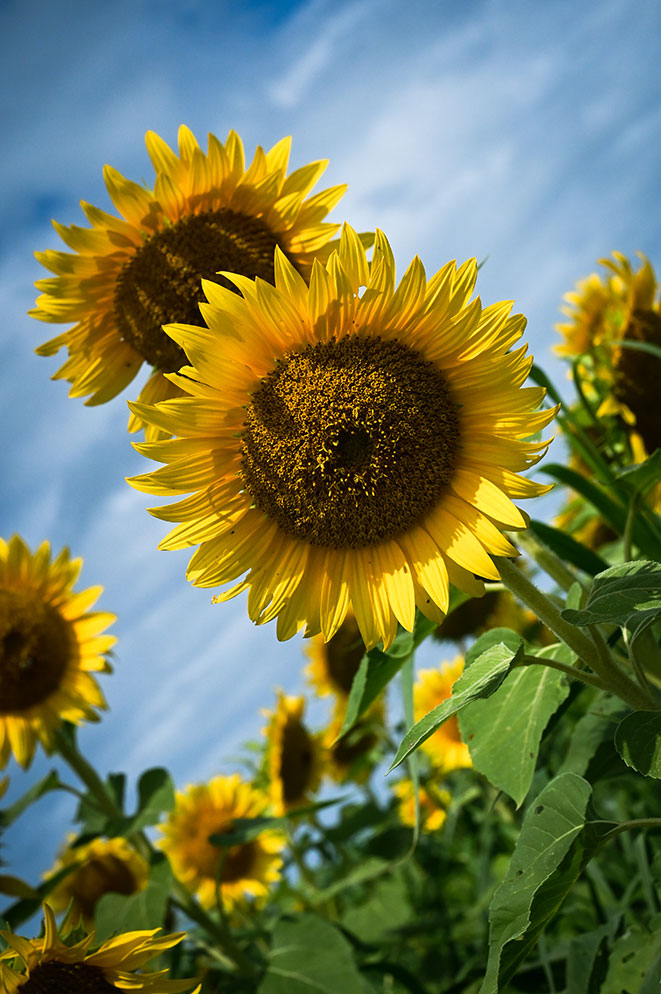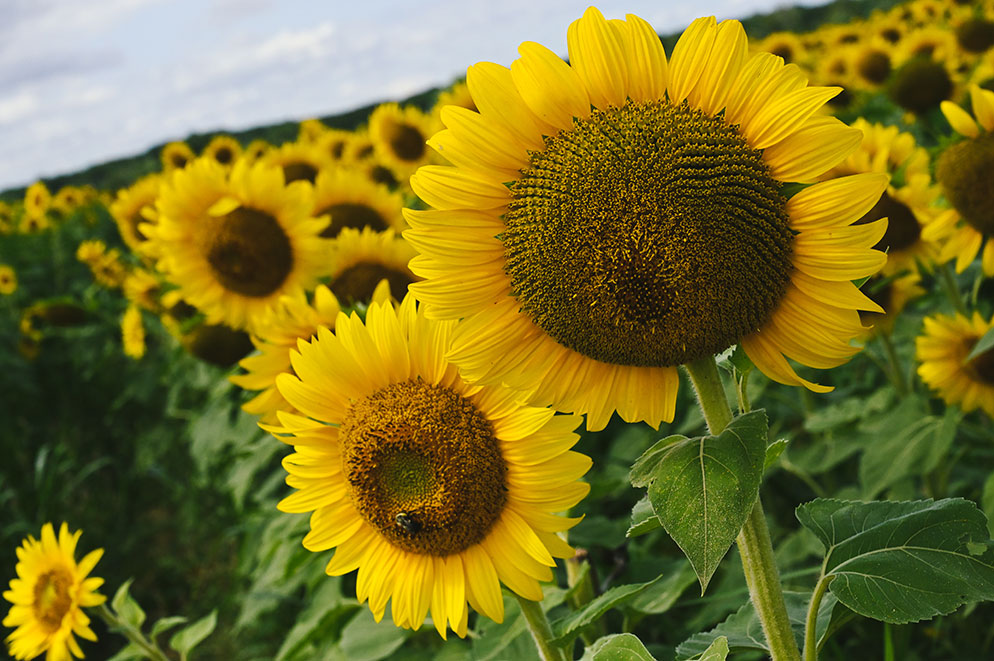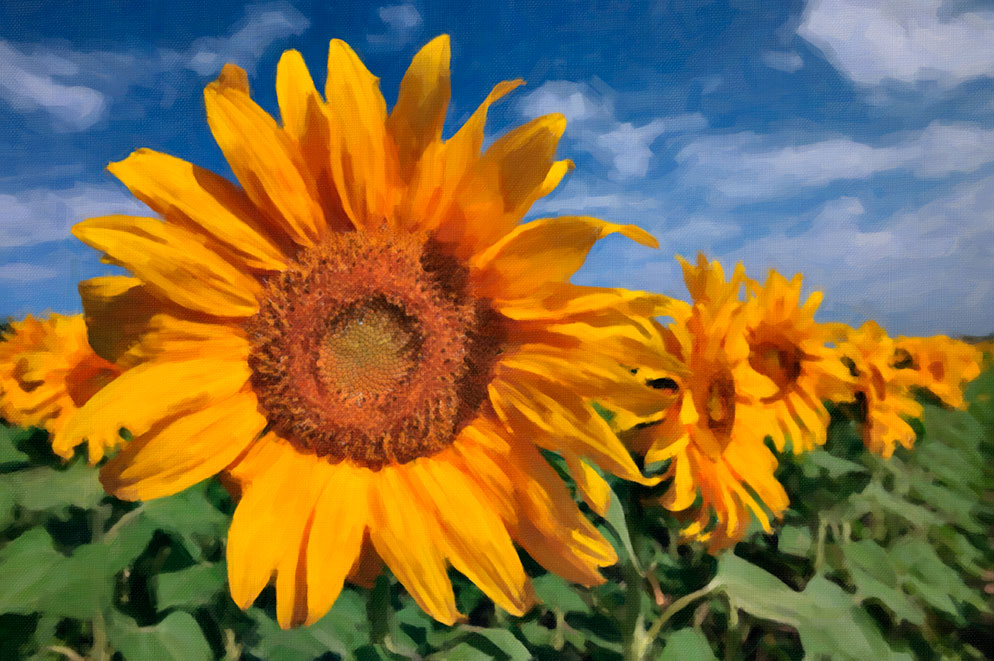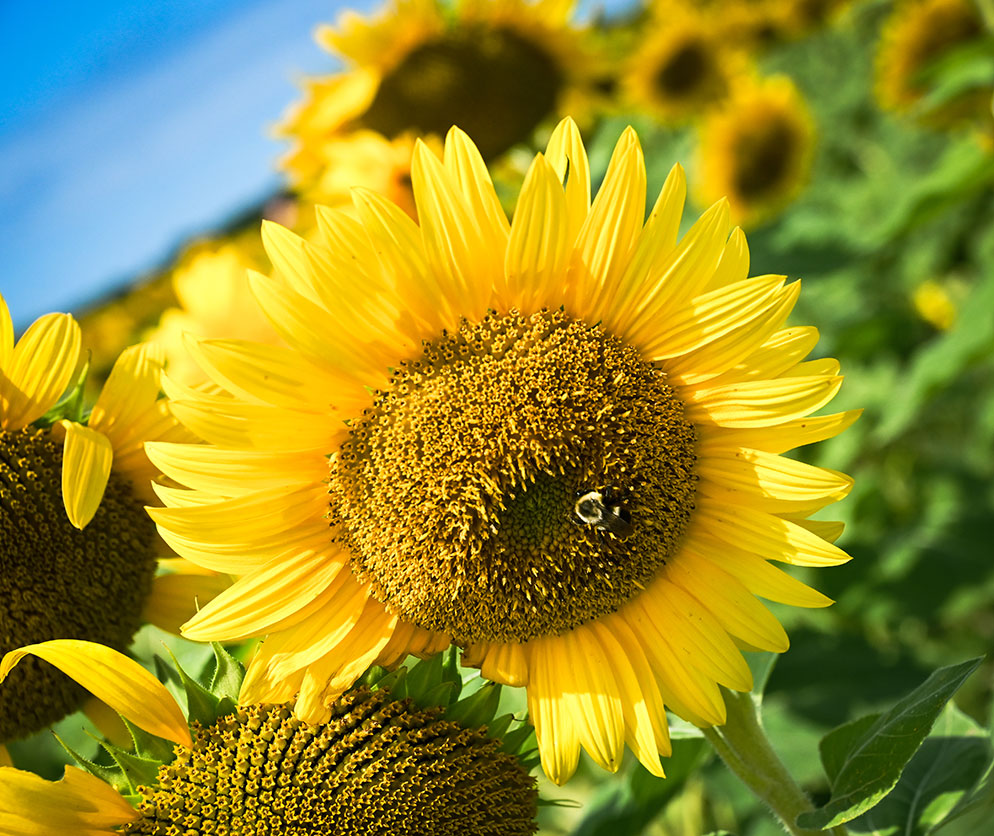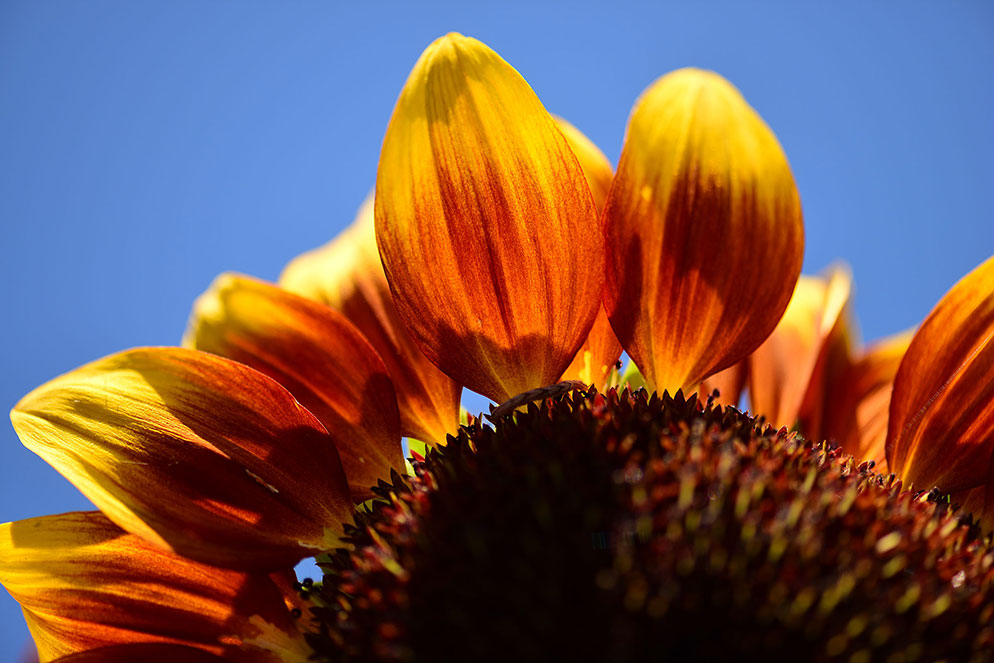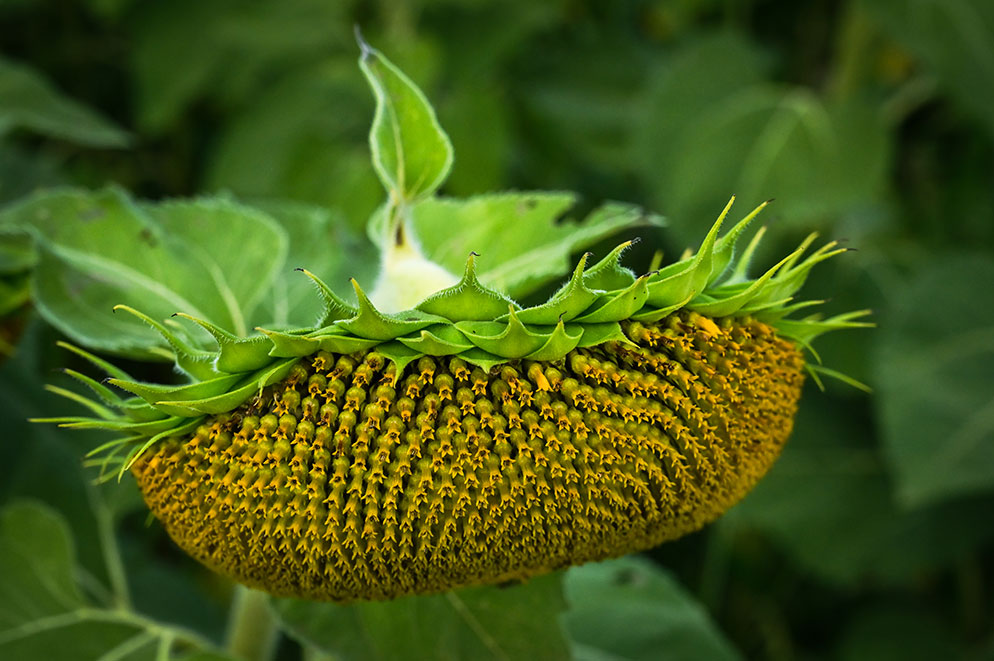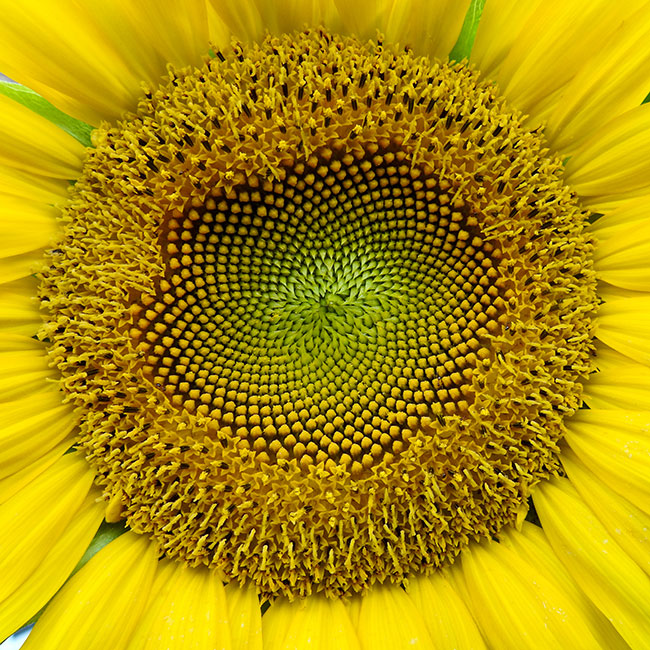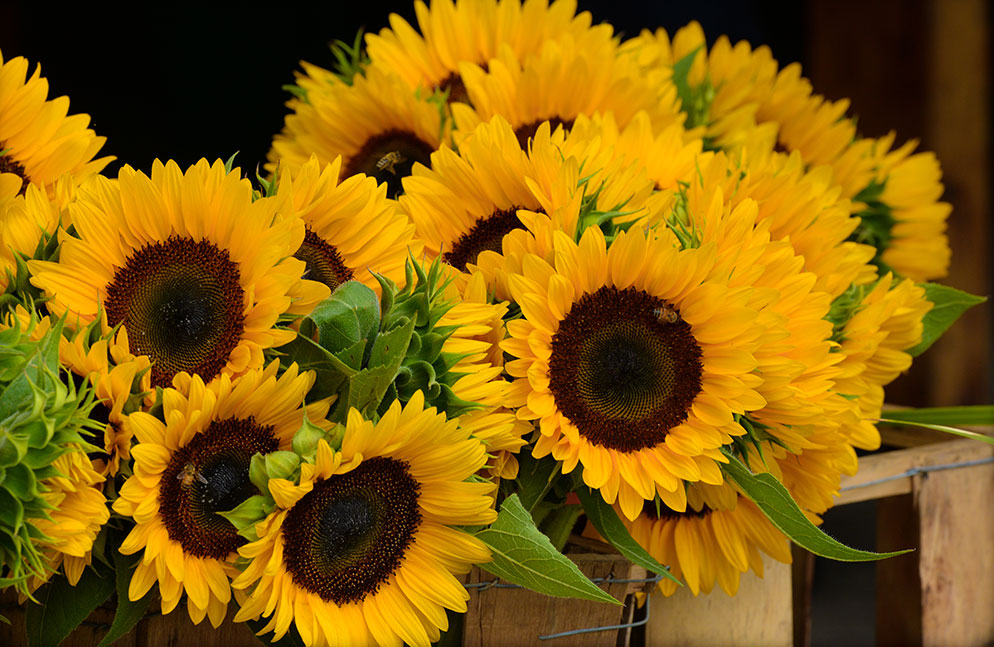Sunflower Photography Ideas
Sunflowers are big, beautiful flowers that are popular around the world. Sunflowers symbolize happiness, optimism, peace and loyalty among other meanings. Photographing sunflowers, and fields of thousands of sunflowers are a popular pastime for nature photographers and photographic enthusiasts. Sunflowers are often grown in the family backyard as well as by farmers who plant acres of fields in order to harvest the flowers, the seeds or both.
The most important rule when photographing sunflower fields is to obey all signage. Don’t go onto private property without permission to take photos, don’t trample the flowers, don’t pick them either if signs say that is prohibited. In recent years, photographing sunflower fields full of blossoms has become trendy due to posts on social media, but with that popularity has also brought out thoughtless photographers who ruin it for the rest of us.
Many sunflower farmers will allow visitors into portions of their fields. Some even create sunflower field mazes for folks to enjoy. Most don’t want you to pick those flowers, instead purchase ones they’ve already picked and set aside. Some are free, others charge a nominal fee. And then there are some sunflower farms that will set aside certain times of the day for professional or enthusiast photographers to bring clients to photograph for a fee. Check the websites of the farms you want to visit.
Sunflower Field Pictures
Best Time of Day to Photograph Sunflowers
Did you know that sunflowers face the sun? They do. If you were to visit a field of sunflowers in the morning and stay till late afternoon, you would see the faces of the young flowers follow the sun across the sky.
So, depending upon what you want in the background of an image, you may have to show up early or visit later in the day.
We’ve gathered together 10 different ideas of photographs you could make in a sunflower field. Read on...
Close Up Sunflower Pictures
10 Sunflower Picture Ideas and Tips
Photograph an entire field. Using a wide-angle lens or the wide end of a zoom lens or COOLPIX digital camera, capture a large area of an entire field of flowers. Try different angles, shoot from below as well as above. Fill as much of the frame as you can with the flowers, leaving little space for the sky in the composition to show how vast the expanse of flowers is.
Photograph one sunflower up close, filling the frame with just that flower and stem.
Get even closer with a macro lens (or Macro mode on a COOLPIX camera) and photograph just the center of the sunflower. To add interest, wait until a bumblebee or butterfly lands on the flower. if you don’t have a macro lens, you may be able to use a telephoto lens and zoom in for a tight shot.
Turn around and photograph the back of the flower. This can be just as interesting a photo as the front of a flower.
Photograph a sunflower that hasn’t yet blossomed. Walking through a sunflower field, you’ll see flowers in all stages of life, from those that haven’t yet blossomed to others wilting. Interesting photographs can be made of any of these.
Take a portrait of someone in a field of sunflowers.
Take a self-portrait in a field of sunflowers.
Oftentimes sunflower fields also sell cut sunflowers. They’ll likely be in a bucket or basket or other type of container. These also make interesting photographs.
Sunflowers come In different colors! If you happen to find a sunflower field that contains a variety of colorful sunflowers, this will make a truly unique image as most people are used to only seeing yellow sunflowers.
Once you’ve photographed the flowers “normally” you might want to try to take some more creative images. If you’re using a Nikon Z series mirrorless camera, you’ve got 20 Creative Picture Controls to choose from. Try them all! Just remember that if your camera is set to record images only as JPG files, the Picture Control will be baked into the image and you won’t be able to revert to a normal look. So if you aren’t sure that you’ll like the outcome, or just want the option of reverting back to the normal look, set the camera to save the images as either RAW NEF files or RAW NEF + JPG. Then use Nikon’s NX Studio (free) software to process the RAW files.

